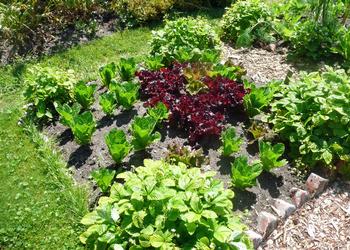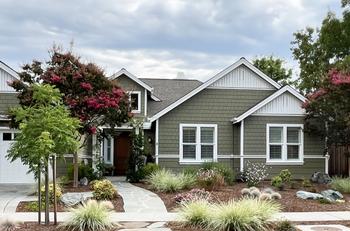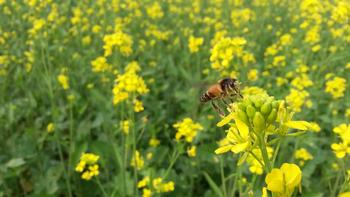For healthy soil, leave it alone
-
Nanette Londeree
-
If you’ve been gardening for a while, you likely learned that turning your soil (tilling) to incorporate organic material, control weeds, and prepare for seeding is a good thing. There was a time when many home gardeners even had their own little rototiller to do this. Times have changed, and we now have a much better understanding of how harmful this physical disturbance is to the abundant life in the soil.
 When the long vegetable growing season is over, plant a cover crop to keep feeding the life in the soil. Photo: Nanette Londeree
When the long vegetable growing season is over, plant a cover crop to keep feeding the life in the soil. Photo: Nanette LondereeHealthy soil is the foundation of a productive garden. It’s a vital living ecosystem that is home to a complex and diverse mix of microscopic and macroscopic life that represents the greatest concentration of biomass anywhere on the planet: bacteria, fungi, microscopic insects, earthworms, beetles, and ants, among them. There are reportedly more microorganisms in a teaspoonful of soil than there are people on the earth! The creatures that live in the soil, commonly referred to as the soil food web, do important work like decomposing organic matter, cycling nutrients that plants absorb, and creating channels within the soil to help the movement of water and gases.
There's a special connection between this soil life and plants. As plants grow, they produce sugars that are stored in their roots. To attract microbes, plants release these sugars into the soil. The microbes take the sugars and, in exchange, give the plants nutrients and water. It’s a mutually beneficial relationship that works well as long as life in the soil is protected.
How do you protect your soil? It’s pretty easy - disturb the soil as little as possible, grow as many different species of plants as practical, keep living plants in the soil as often as possible, and keep the soil covered all the time. The soil in this garden is protected with diverse ornamental plants that grow year-round, and fir bark mulch. Consider fire-safe landscaping tips.
The soil in this garden is protected with diverse ornamental plants that grow year-round, and fir bark mulch. Consider fire-safe landscaping tips.Disturbing soil by tilling, leveling, or otherwise manipulating its natural physical arrangement is destructive and disruptive to soil microbes and creates a hostile environment for them to live in. It also destroys the structure of soil and can make it more susceptible to erosion. Nature’s “no-till” way relies on leaving the soil alone and nourishing it by the continual addition of new layers of dying and dead plant matter. As these materials gradually decompose, they feed the soil.
Many of the substances soil microbes consume are produced by plants. The greater the variety of plants, the more diverse the population of soil microorganisms will be. Growing a wide range of native and ornamental plants in your garden is good for the soil, supports beneficial insects, and is pleasing to the eye. To expand diversity in vegetable gardens, try incorporating companion planting, rotating crops, and growing cover crops (often referred to as “green manure”). Clover, vetch, and beans as cover crops also help to increase soil organic matter and plant-available nitrogen.
Keep plants growing as long as possible to provide food to the soil microbes during the entire growing season. Plant roots are surrounded by a thin zone of increased and concentrated microbial activity. This is where a lot of the action takes place in the plant-soil-microbe relationships. Nurture and maintain this healthy soil environment by keeping ornamental plants growing year-round, growing long-season edible crops, or planting cover crops between short-season crops. Planting a cover crop like mustard improves soil health, looks beautiful, and attracts beneficial insects. Photo: WikiMedia Commons
Planting a cover crop like mustard improves soil health, looks beautiful, and attracts beneficial insects. Photo: WikiMedia CommonsNature abhors bare soil and is always trying to cover it, usually with weeds! Soil should always be covered by plants, their residue, or mulch. Cover provides a refuge and habitat for beneficial insects and arthropods, conserves soil moisture, keeps the soil cooler in hot summer months, and suppresses weed growth. Many materials may be used for mulch, with pros and cons for each. Visit the Marin Master Gardener website at https://marinmg.ucanr.edu/ to learn about mulch, healthy soil, cover crops, and more.
It’s easy to keep your soil healthy - disturb the soil as little as possible, grow as many different species of plants as practical, keep living plants in the soil as often as possible, and keep the soil covered all the time.



